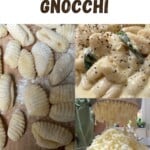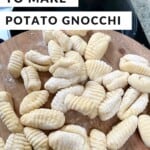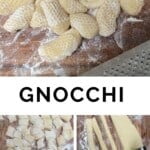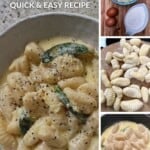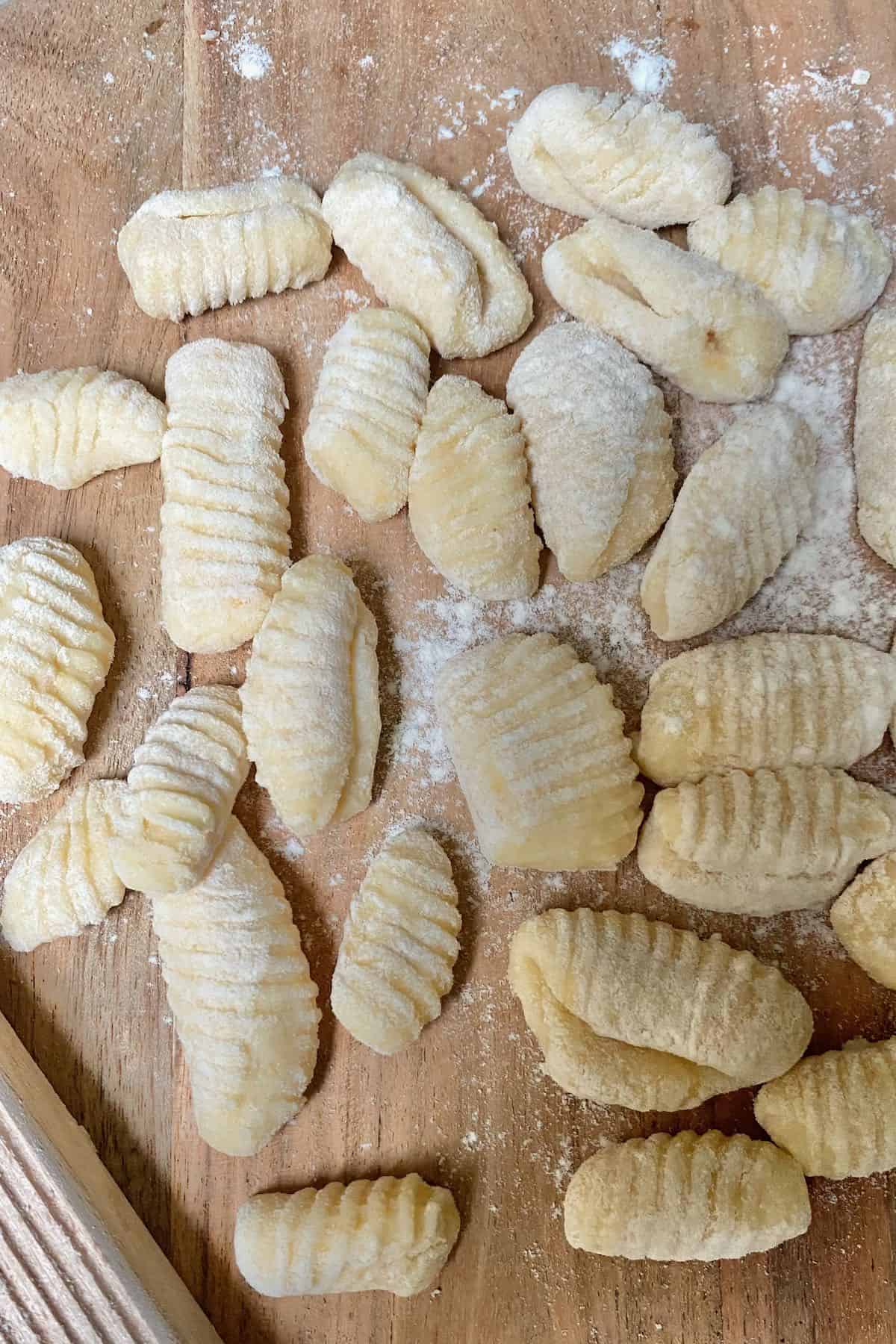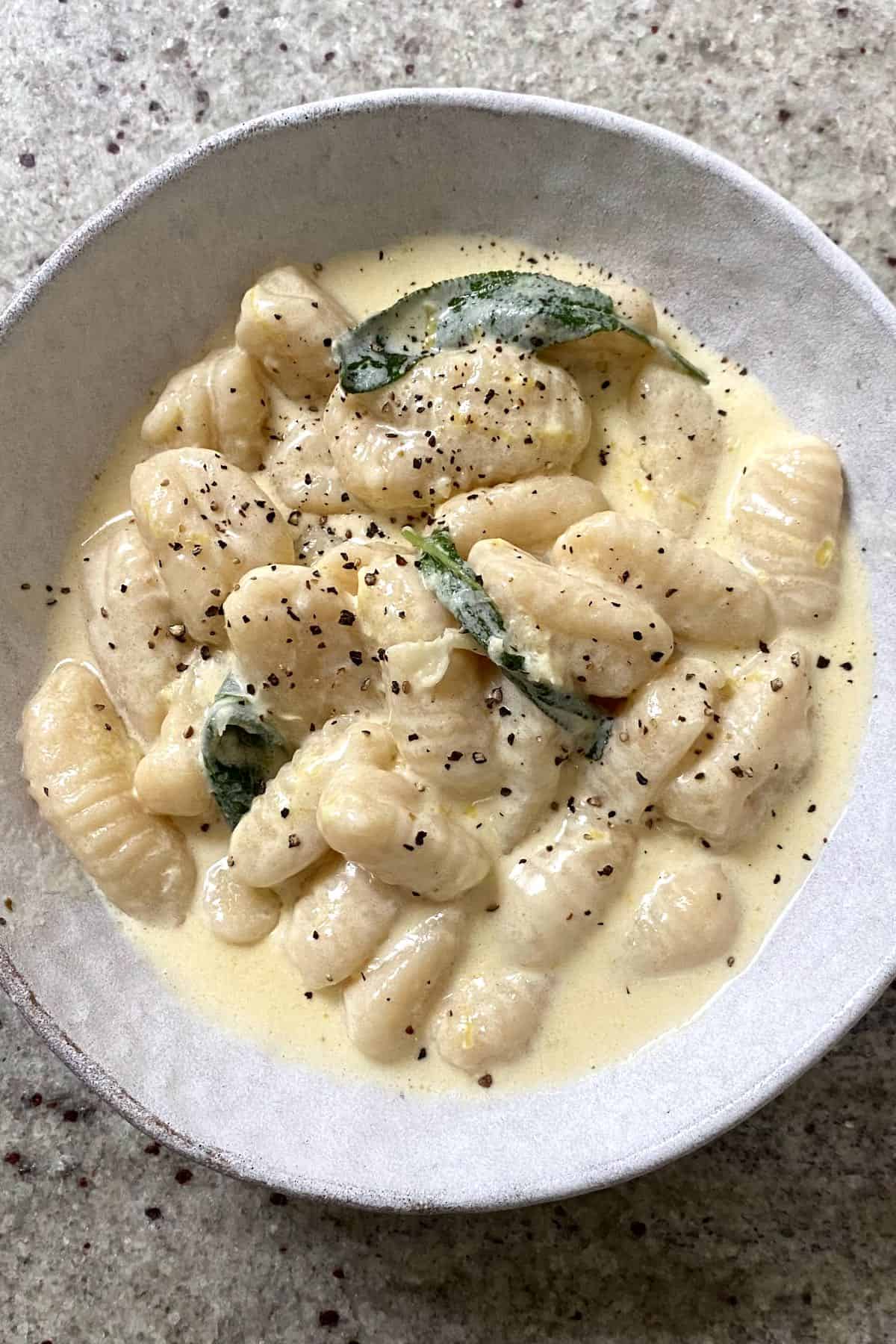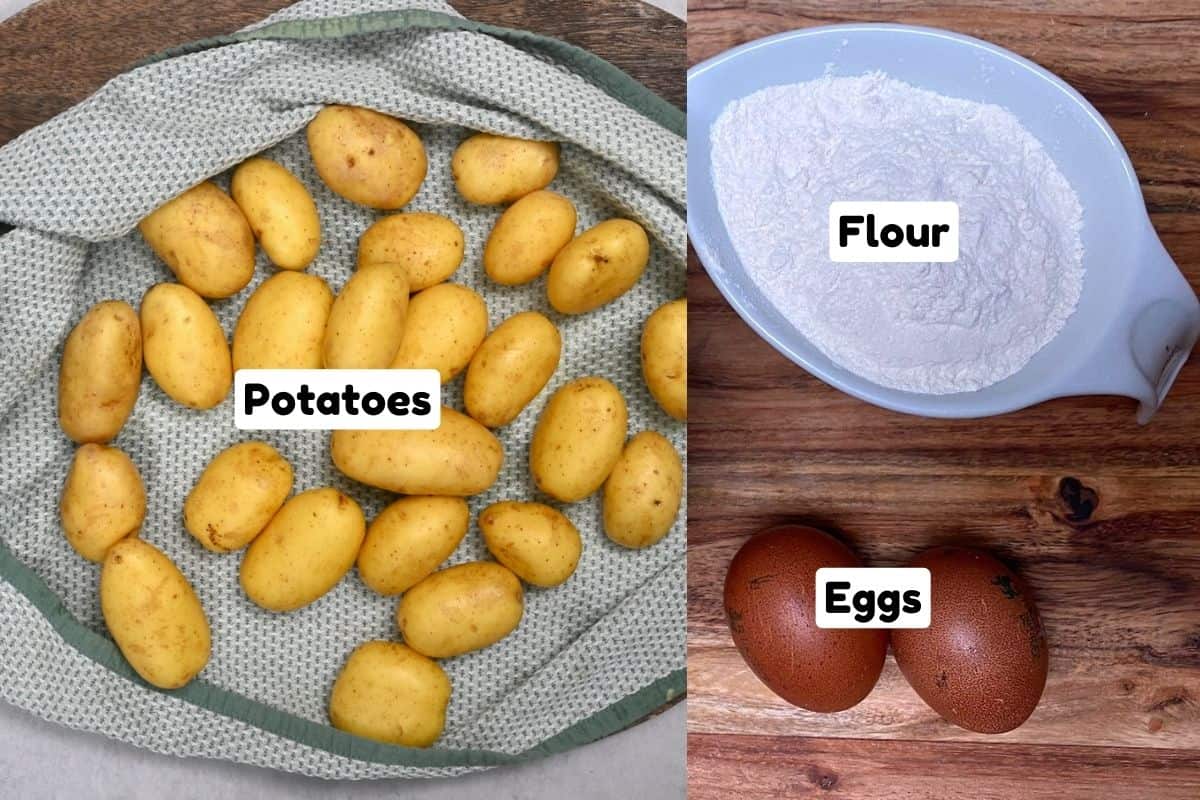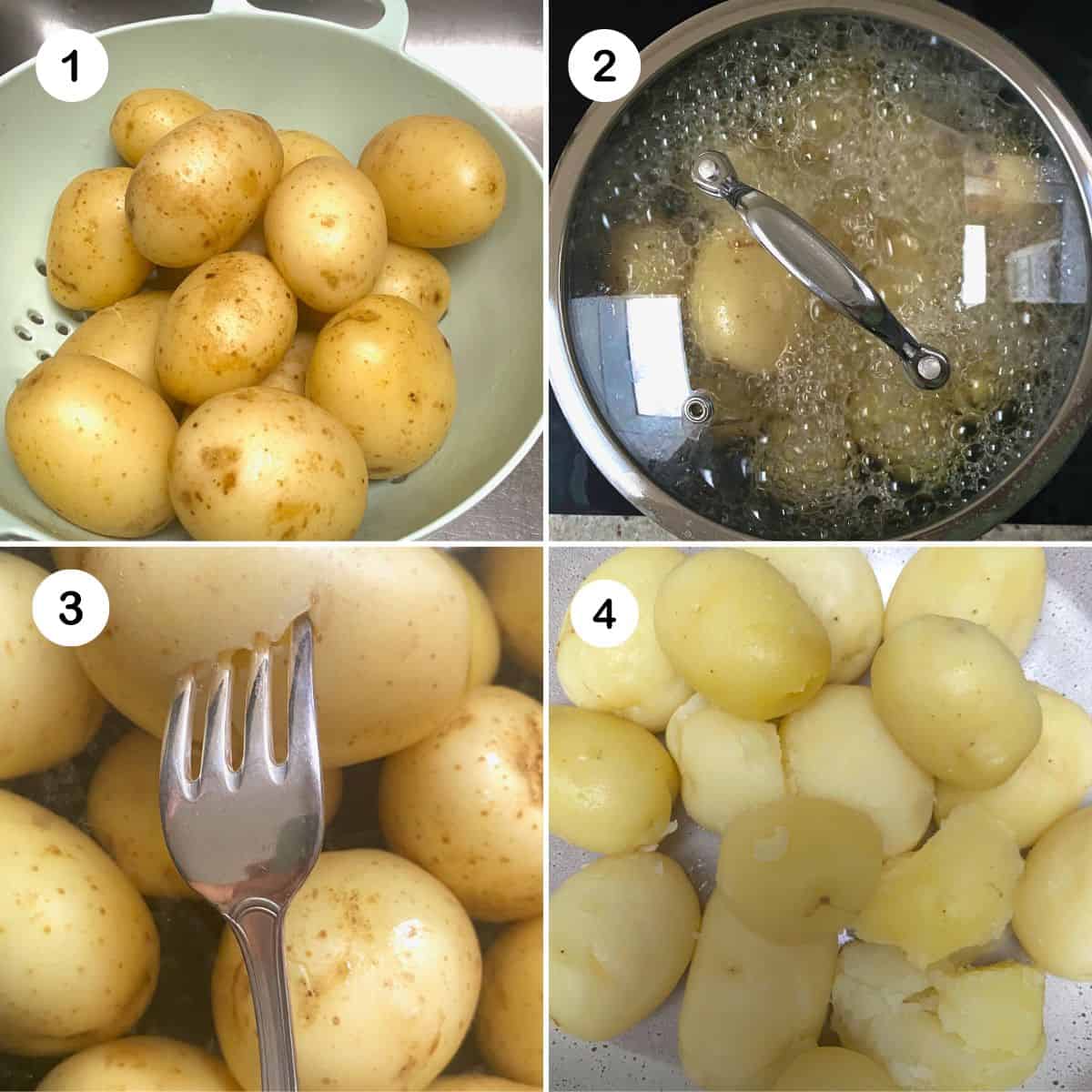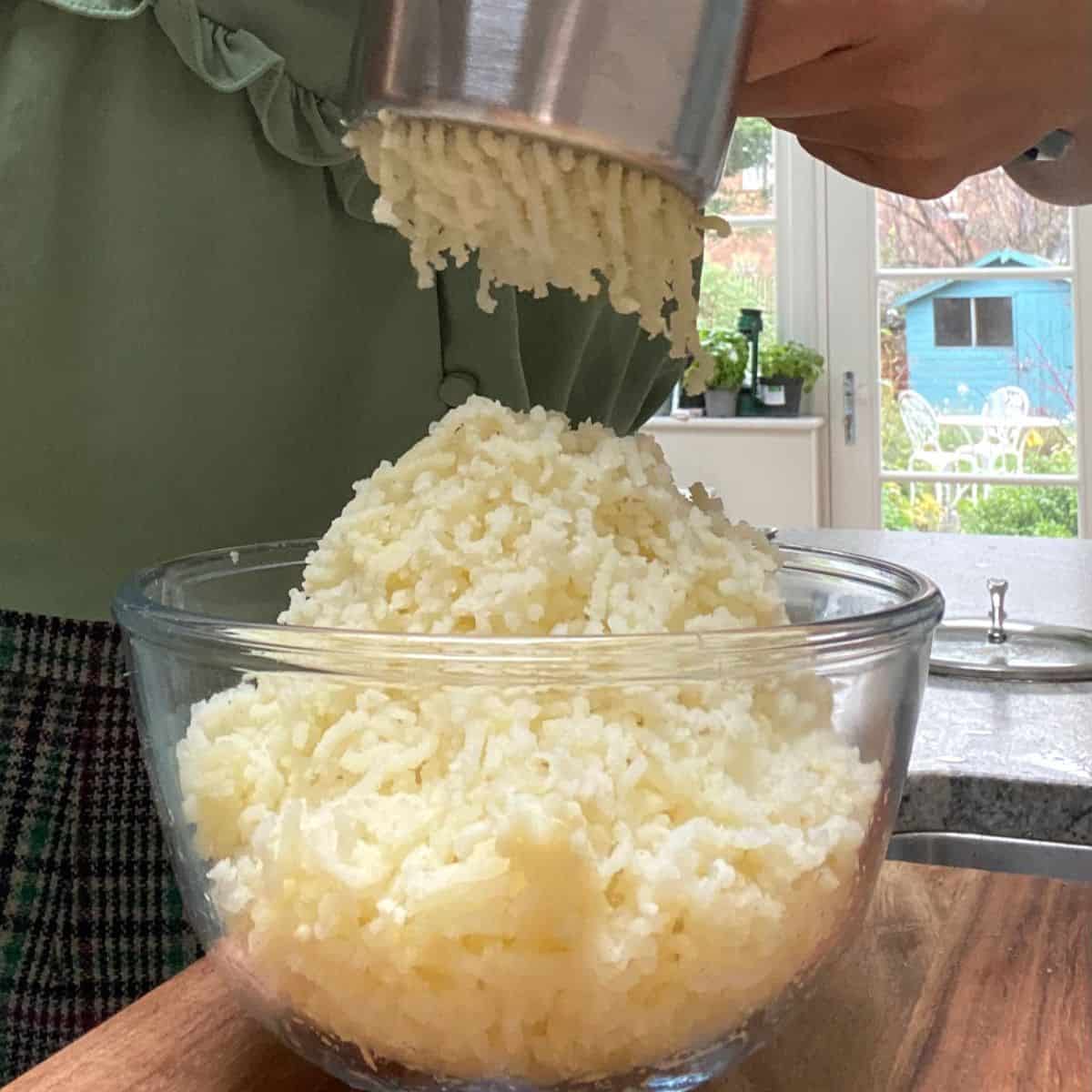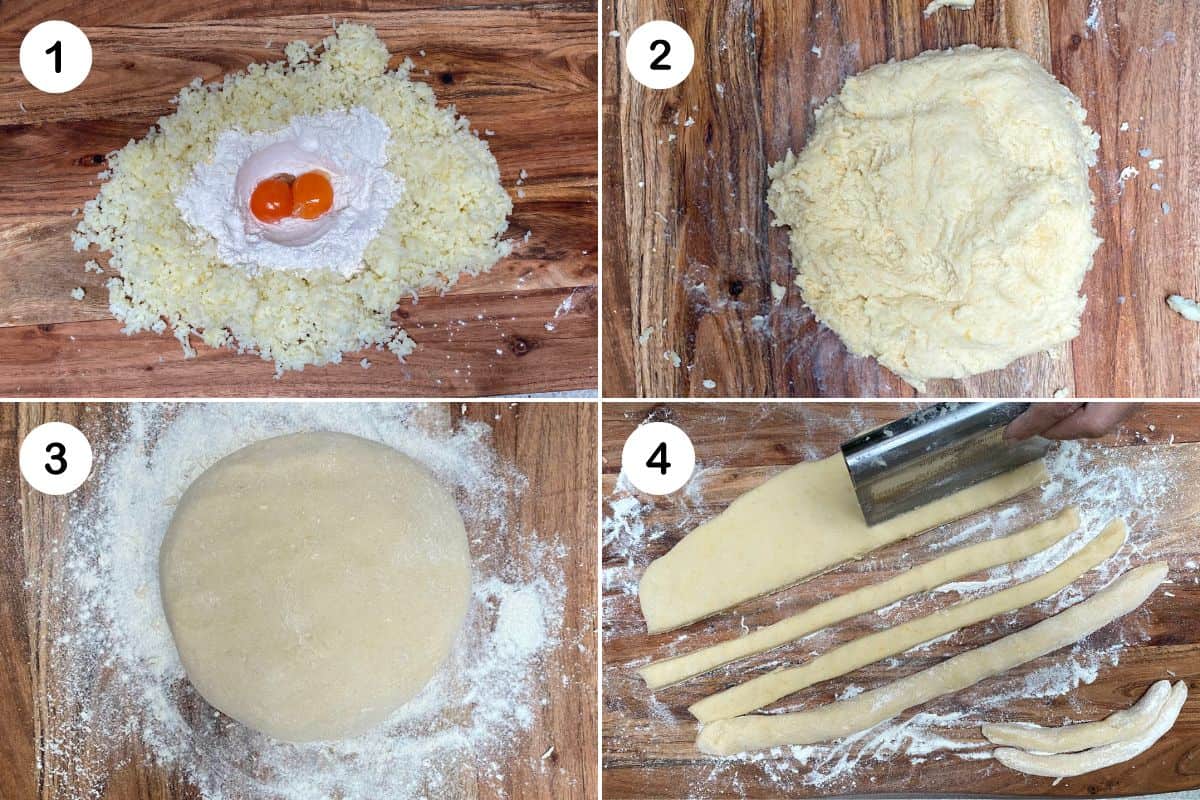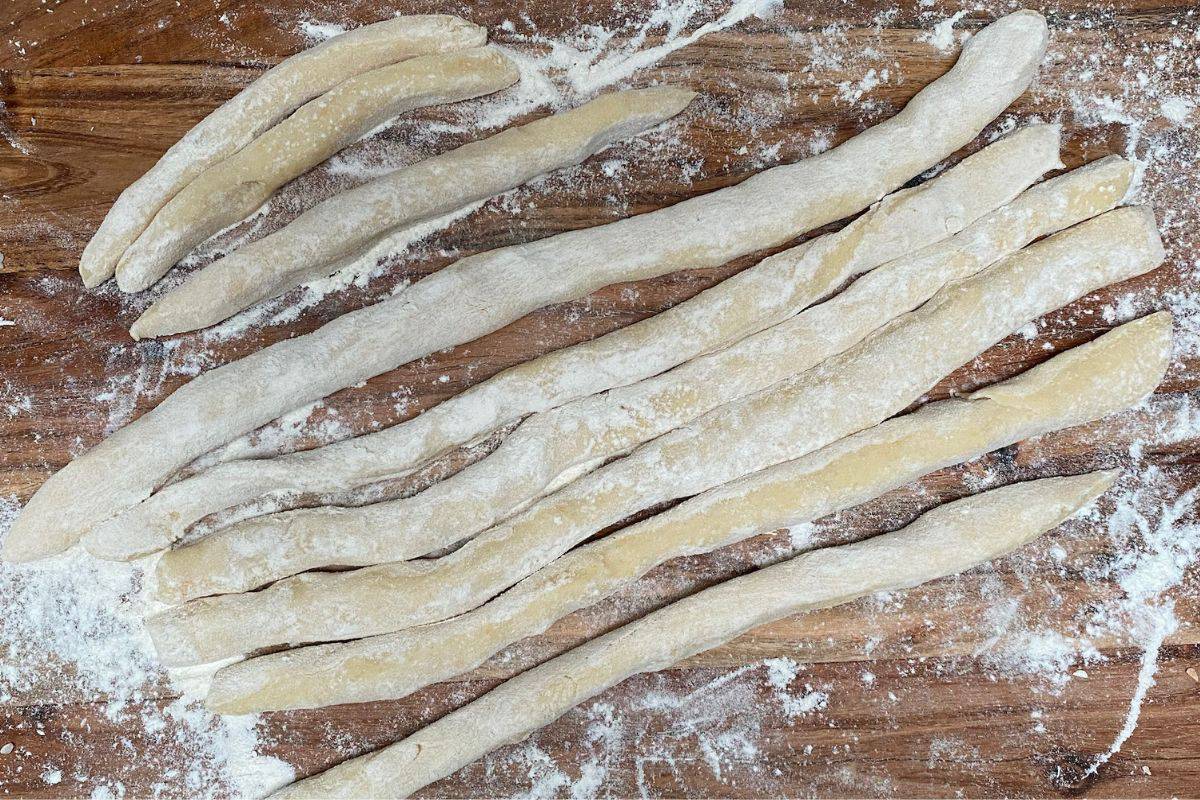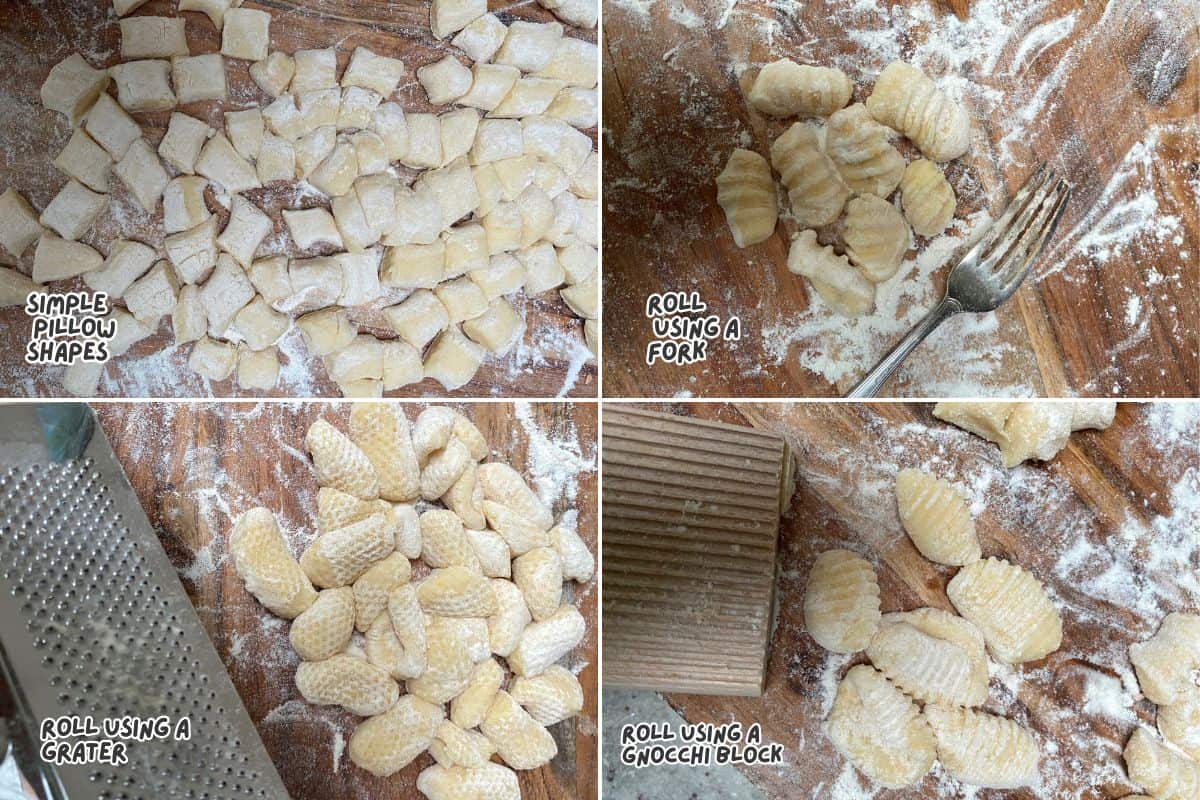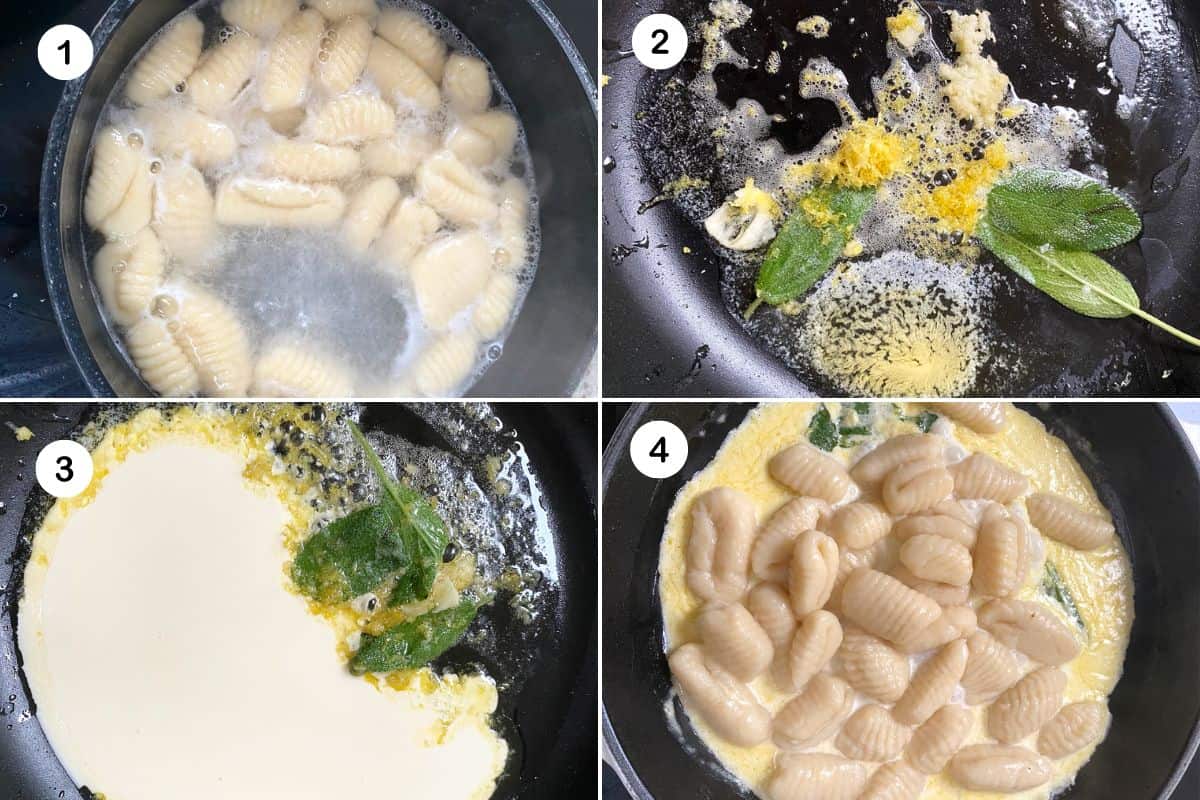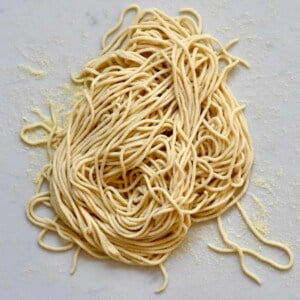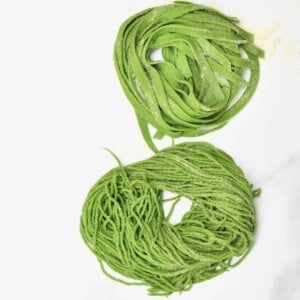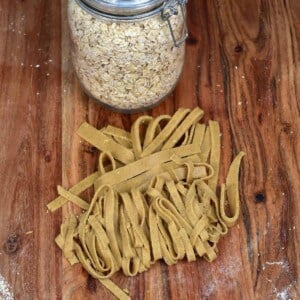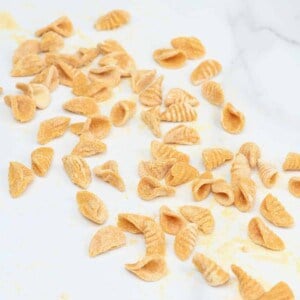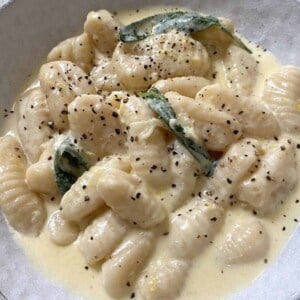Homemade gnocchi is one of those foods that seems like it will be tricky to master but is actually surprisingly simple. All you need is the right ingredients and method, and you’ll have fluffy, pillowy potato gnocchi every single time. They are light and fluffy and practically melt-in-the-mouth. Plus, the process is actually incredibly simple – boil, peel, and mash the potatoes, mix the dough, shape it, and cook. Once it’s boiled (ready in minutes), fry it up in a little of your favorite sauce, and voila, you have delicious, fluffy dumpling pasta that you’ll want to enjoy time and time again.
What are gnocchi?
Gnocchi is a type of Italian pasta dumpling traditionally made with a base of potato, egg, flour, semolina, or similar ingredients. It is traditionally shaped with ridges, perfect for picking up extra sauce that it’s often served with (if not within a soup or pasta bake). Over time, several variations on the traditional have emerged. These can include using a different base: sweet potatoes, pumpkin, butternut squash, etc. You can also omit the potato entirely and use ricotta for “gnudi.” For this recipe, I’m sharing my favorite method for simple and traditional potato gnocchi, which, when done right, is extraordinary!
How to make gnocchi
Prepare the potatoes
To mash the potatoes: Use a potato ricer for aerated results, or even a grater. However, you can also use a fork or potato masher if that’s all you have. The results won’t be as fluffy though. To shape the potatoes: No tool is needed if shaping as a pillow. You could also use a fork, grater, or a specific gnocchi board.
Clean and boil the potatoes whole and un-pierced in salted water for 20-30 minutes or until fork-tender. Leaving the skins on means that the potatoes absorb less water and won’t affect the dough. They are also easy to peel once they’re cooked. Allow the potatoes to cool slightly until you can handle them enough to peel the skins. This should be easy, as the skins slip off when you pinch them between your fingers and pull. If you use a potato ricer, you can leave the potatoes unpeeled, and the ricer will filter the skin naturally. Mash the potatoes using a potato ricer or cheese grater for the best results. You can use a fork or potato masher if necessary – though you’re more likely to end up with denser homemade gnocchi. Form the dough On a clean surface, turn out the mashed potato. Make a well in the center and add the flour and egg yolks. It’s best to allow the riced potato to cool slightly before mixing it with the flour. Otherwise, the potato can affect the protein in the flour. Combine the ingredients into a dough using your hands or a bench scraper until it’s just incorporated, soft, smooth, and slightly sticky. Add more flour, if necessary – but be careful not to add too much, or you’ll have dense gnocchi. Be careful not to overmix the gnocchi, or it will become tough – 30-60 seconds is usually more than enough. Shape the dough into a ball and allow it to rest for a few minutes. Shape the gnocchi There are several ways to deal with the dough now. You can separate it into several even-sized pieces and roll them into long log shapes, around 1/2 inch in thickness. Alternatively, roll out the dough to flatten it to around 1/2-inch thickness and then chop it into long strips. Once you have your logs/strips, then chop them into smaller pieces, around 3/4-inch to 1-inch apart. You can then leave the pieces as-is for simple pillow shapes. Alternatively, use a gnocchi block, fork, or grater to roll each piece over to create ridges. Use your thumb to firmly press the dough over the ridges of the board/fork and roll downwards. You can also create different patterns using a grater. Creating ridges on potato gnocchi increases the surface area for the sauce to cling to. Lay the pieces out and allow them to rest for 20 minutes. This is technically optional, but it will allow the gnocchi to firm up so that they can hold their shape when boiling. At this point, if you don’t plan on using the pasta within the next few hours, you can freeze it for longer-term storage (read the storage section for details on how). Cook the gnocchi To cook gnocchi, bring a pot of salted water to a boil. Add the gnocchi in small batches, enough to form a single layer in the pot. Stir the pasta a couple of times to prevent them from sticking together. When they first go in the pot, they’ll sink. Continue to boil until the gnocchi float to the surface. Leave them for a further 15-20 seconds before removing them from the water. This whole process usually takes between 3-5 minutes. Once the pasta is boiled, you can saute with a little butter, sage and cheese, or mix with the sauce of your choice, like the lemon cream sauce below. For The Creamy Sauce Add some butter and sage leaves to a pan over medium-high to allow the sage to infuse into the butter. Add lemon zest, minced garlic, and a bit of cream. Stir together and simmer for a minute or so, then add the gnocchi. Mix well, season with salt and pepper to taste, and serve immediately. The amounts you’ll need depend on how much gnocchi you’re making. I usually do this by eye, taste the sauce, and adjust any of the ingredients as needed.
Serving Suggestions
Gnocchi is relatively neutral on its own and best served with a delicious sauce, either alone or as a bake. There are tons of gnocchi sauce options that you can choose from:
Pesto – like this Delicious Vegan Basil Pesto (with pistachios) Lemon cream sauce – As mentioned in this post. Tomato sauce – like this marinara (add a little cream for a creamy version) Red pepper sauce A simple browned butter (with some crispy sage, optional) You can also turn the dish into a gnocchi bake by adding it to a large baking dish, topping with breadcrumbs and cheese, and then baking or broiling till warm, golden, and bubbling.
If you try this homemade potato gnocchi recipe, let me know how it goes in the comments below. I’d appreciate a recipe card rating and would love to see your recipe recreations – tag me on Instagram @Alphafoodie! Don’t refrigerate uncooked gnocchi dough for more than a day, or it may break apart when boiled. Pan-frying is better for longer storage. To freeze gnocchi, partially freeze it and then freeze it in a freezer-safe container or bag for up to two months. You can cook the gnocchi from frozen, though it’ll need to be done in smaller batches. Otherwise, they reduce the water’s temperature too much, and the gnocchi will fall apart before they cook.

